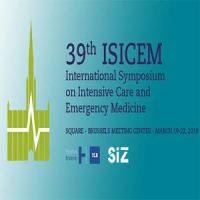At the Euroanaesthesia Congress in Geneva this year, experts discussed the unusual and challenging problem of performing emergency medical procedures during space missions.
Dr Matthieu Komorowski, Consultant in Intensive Care and Anaesthesia, Charing Cross Hospital, London, UK explains that there are missions planned to the Moon and Mars in the coming years. During these long journeys, there is a significant risk of severe medical and surgical events. Exposure to the space environment can disturb our physiological systems and can precipitate the onset of space-specific illnesses which could include cardiovascular deconditioning, acute radiation syndrome, hypobaric decompression sickness and osteoporotic fractures.
If any crew member suffers from such an illness or injury, they would have to be treated and cared for by other team members who may have had very little formal medical training. In addition, the space crew may not have the required equipment and consumables to deal with the situation. In other words, it may be possible that a non-medical person may have to care for an injured or ill crew member. Since they will not have access to any medical help, the crew would need to be self-reliant. Things could become much worse if the doctor on board himself becomes ill or injured or in the worst-case scenario, dies. Therefore, it is important to extend basic medical training to most crew members. The crew must also be prepared for non-survivable illnesses or injuries that they would not be able to treat.
During the session, Dr Komorowski discussed solutions and countermeasures that could be applied during such missions and such environments. These include matching crew members for blood type in case of transfusions, making use of on-demand 3D printing of medical equipment, performing cardiopulmonary resuscitation etc.
Professor Jochen Hinkelbein, Executive Senior Physician, Department of Anaesthesiology and Intensive Care Medicine, University Hospital of Cologne, Cologne, Germany points out that since most astronauts are young and selected carefully, the chances of medical problems in space are rare. But in case of long-term missions which are expected to last several years, the risk increases. The environment itself poses a risk. For e.g. performing CPR in space is not exactly easy. It is not possible to use one's body weight to perform CPR in microgravity. Prof Hinkelbein outlined different CPR methods that can be used in microgravity such as using a hand-stand technique or the Evetts-Russomano method of wrapping the legs around the patient to prevent them from floating away while performing compressions.
"In the context of future space exploration, the longer duration of missions, and the consecutively higher risk of an incident requiring resuscitation increase the importance of microgravity-appropriate medical techniques," Prof Hinkelbein concludes.
Source: ESA
Image credit: Pixabay
Latest Articles
emergency medicine, CPR, #ESAGeneva, space missions
At the Euroanaesthesia Congress in Geneva this year, experts discussed the unusual and challenging problem of performing emergency medical procedures during space missions.



























